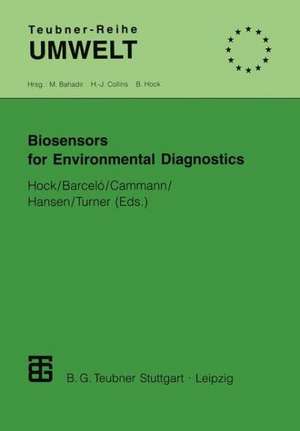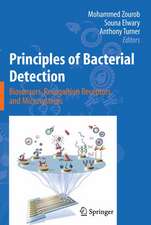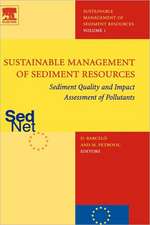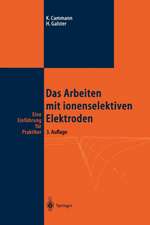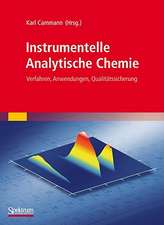Biosensors for Environmental Diagnostics: Teubner-Reihe Umwelt
Editat de Bertold Hock, Damia Barcelo, Karl Cammann, Peter-D. Hansen, Anthony P. F. Turneren Limba Engleză Paperback – apr 1998
Preț: 389.70 lei
Nou
Puncte Express: 585
Preț estimativ în valută:
74.57€ • 78.05$ • 62.07£
74.57€ • 78.05$ • 62.07£
Carte tipărită la comandă
Livrare economică 31 martie-14 aprilie
Preluare comenzi: 021 569.72.76
Specificații
ISBN-13: 9783815435403
ISBN-10: 3815435404
Pagini: 284
Ilustrații: 279 p. 86 illus.
Greutate: 0.45 kg
Ediția:Softcover reprint of the original 1st ed. 1998
Editura: Vieweg+Teubner Verlag
Colecția Vieweg+Teubner Verlag
Seria Teubner-Reihe Umwelt
Locul publicării:Wiesbaden, Germany
ISBN-10: 3815435404
Pagini: 284
Ilustrații: 279 p. 86 illus.
Greutate: 0.45 kg
Ediția:Softcover reprint of the original 1st ed. 1998
Editura: Vieweg+Teubner Verlag
Colecția Vieweg+Teubner Verlag
Seria Teubner-Reihe Umwelt
Locul publicării:Wiesbaden, Germany
Public țintă
Upper undergraduateCuprins
1 New techniques and analytes.- Resonant energy transfer detection for low volume immunoassay in environmental applications.- Screen-printed sensors and biosensors for environmental applications.- A manufacturing technology for biosensing.- Development of an enzyme-linked immunosorbent assay for the determination of Irgarol 1051.- Immunosensor systems with renewable sensing surfaces.- 2 Industrial pollutants.- Catalytic and affinity amperometric biosensors for phenols, phosphates, and atrazine: how transduction can improve performance.- A master analytical protocol for determining a broad spectrum of organic pollutants in industrial effluents.- 3 Pesticides.- Measurement of priority metabolites using integrated optoelectronic biosensors derived from antibody and synthetic receptor libraries.- River analyser — multiresidue immunoanalytical monitoring tools.- Strategies for recombinant antibody library synthesis: An advanced source for immunoglobulins in environmental analysis.- Characterization of a monoclonal antibody and its fab fragment against diphenylurea hapten with BIA.- 4 Monitoring of toxic effects.- Endocrine disruptors: Monitoring of effects.- 5 Monitoring of genotoxicity.- Recombinant Escherichia coli cells as biodetector system for genotoxins.- 6 Field experiments.- Potential and capabilities of biosensors for the assessment of environmental pollutants.- Vitellogenin — a biomarker for endocrine disruptors.- 7 Perspectives.- How could a concerted action guide technological developments in the field of biosensors?.- Authors.
Textul de pe ultima copertă
This book reflects the current knowledge and trends in the field of biosensors for environmental monitoring. Biosensors combine the power of microelectronics with the selectivity and sensitivity of biological components to detect individual substances or groups of substances in the environment. Biosensors can also be used for recognizing biological effects such as genotoxicity, immunotoxicity and endocrine responses. For this purpose, components of biological origin such as microorganisms, enzymes, receptors or specific nucleic acid sequences are applied for the recognition and combined with a transducer system to provide toxicologic or pharmacologic data within seconds. This approach is expected not only to provide a significant contribution to measurement technology but also a basis for competent political decisions.
